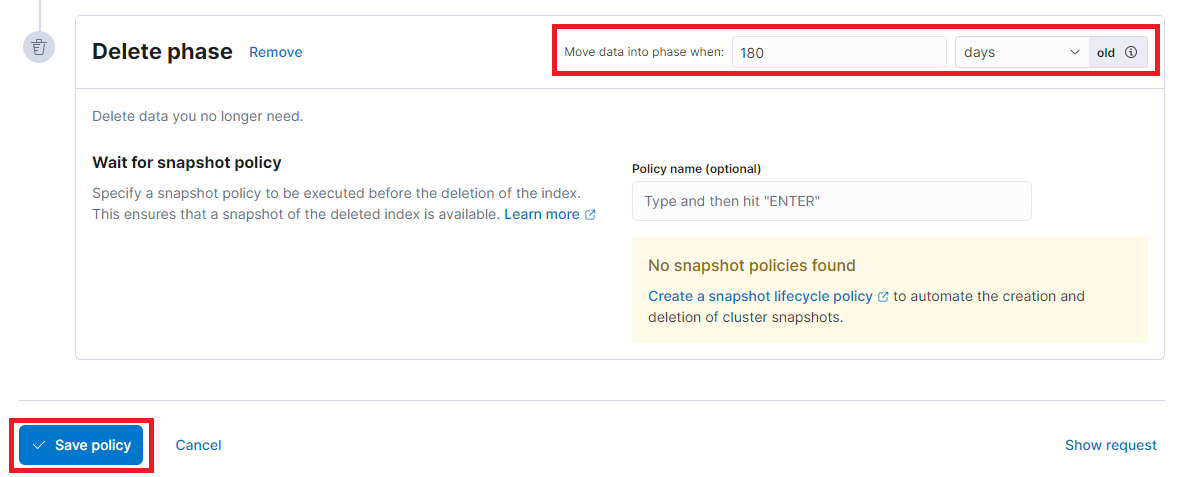Note: This page is no longer maintained. For information on LME index lifecycle management and managing retention settings, navigate to the LME Index Lifecycle Management documentation.
Retention Settings
By default, Logging Made Easy (LME) configures an index lifecycle policy that deletes indices based on estimated disk usage. Initially, 80% of the disk space is allocated for the indices, assuming that one day of logs uses approximately 1 GB of space.
If you wish to adjust the number of days logs are retained, follow the steps below using the lme_ilm_policy under Index Lifecycle Policies.
Adjusting the Retention Period
Step 1: Access Index Lifecycle Policies
Log in to Kibana.
Navigate to: Stack Management -> Index Lifecycle Policies.
Locate the policy named
lme_ilm_policy.Click on the policy name to open its settings.

Step 2: Edit the Delete Phase
Scroll down to the Delete phase section.
Under the Move data into phase after section, set the number of days you’d like logs to be retained (e.g., 180 days).
Optionally, you can set a snapshot policy by typing the name of an existing snapshot policy.
Optionally, add a policy name for reference.
This ensures a snapshot is taken before data is deleted.

Step 3: Save the Policy
Click the Save policy button at the bottom of the page.
Your new retention settings will immediately apply to all indices using the
lme_ilm_policy.
Important: Ensure that the new policy does not result in unwanted data loss by reducing the retention period, which would cause existing logs to be deleted.
Important Notes
Users must ensure that the retention period is appropriate for the disk space available.
If disk space is exhausted, then the solution will experience performance issues and new logs will not be recorded. By default, Elasticsearch will not allocate shards to any nodes that are using 85% or more of the available disk space. Reference the Elasticsearch Documentation (the
cluster.routing.allocation.disk.watermark.lowsetting in particular) for more information.